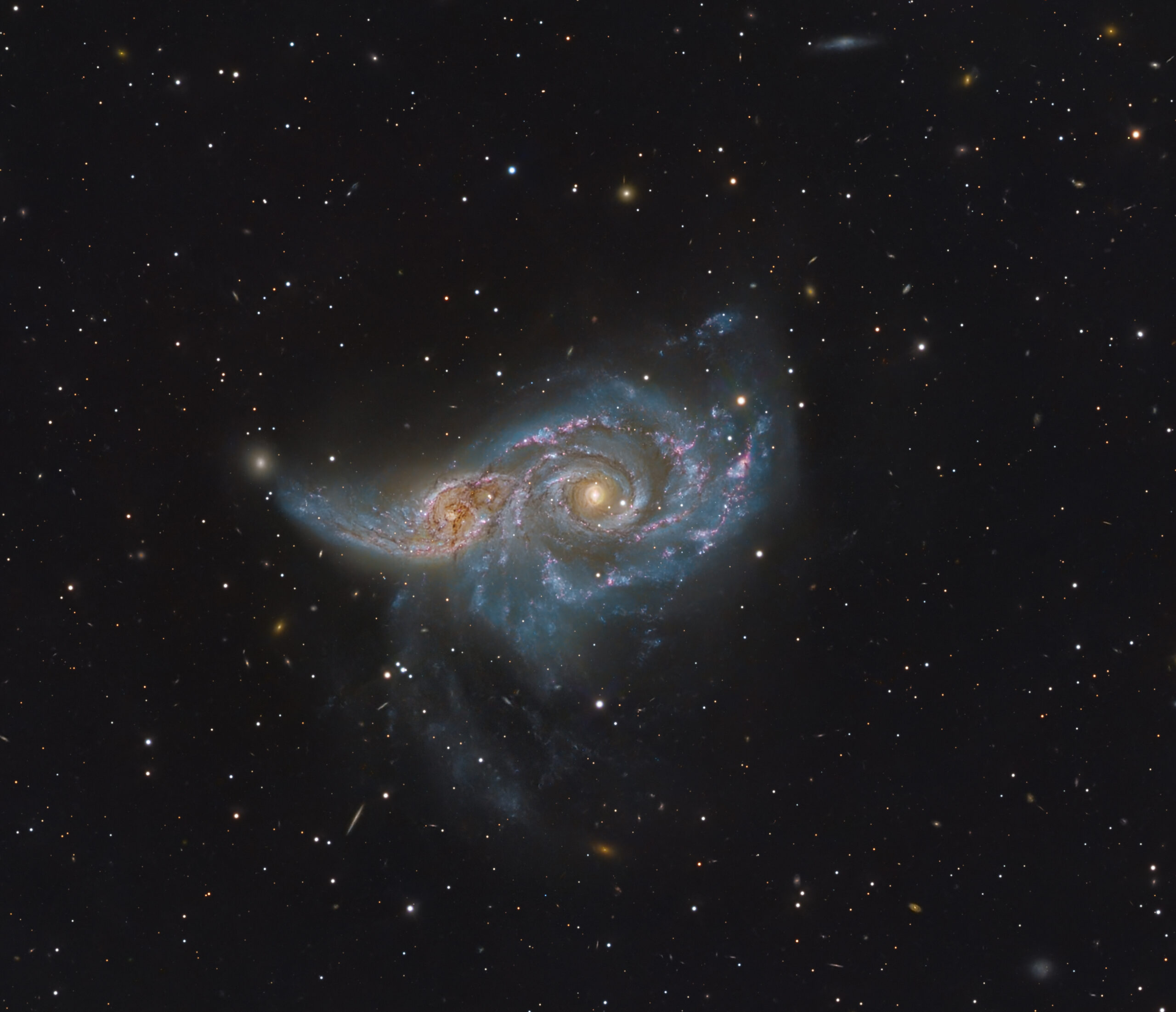
NGC 2207 and IC 2163 are a pair of interacting spiral galaxies located approximately 114 million light-years away in the constellation Canis Major.
In the night sky, they collectively span an angular size of about 4.8 by 3.0 arcminutes, corresponding to a span of approximately 160,000 light-years.
Their gravitational interaction has led to the formation of striking tidal tails and bursts of star formation.
Over the next billion years, they are expected to merge into a single, larger galaxy.
Observations from space telescopes have revealed intricate details of this interaction, including dust lanes and regions of intense star formation.
More recently, mid-infrared imaging highlighted areas rich in cold dust and pinpointed regions where new stars and star clusters are forming.
These observations provide valuable insights into the processes of galaxy interaction and evolution, offering a glimpse into the dynamic and ever-changing nature of our universe.
Imaged in LRGB on my Planewave CDK 1000 at Observatorio El Sauce, Chile.
Image acquisition and processing: Mike Selby